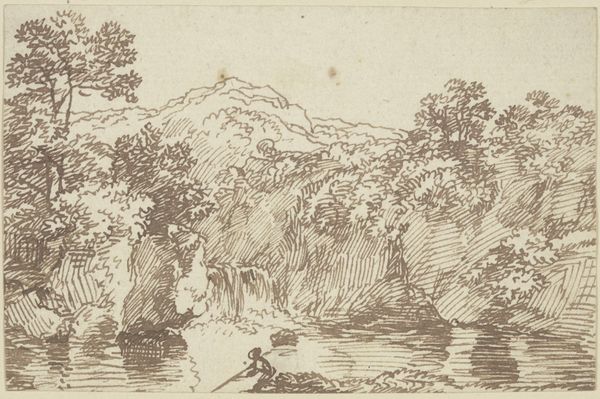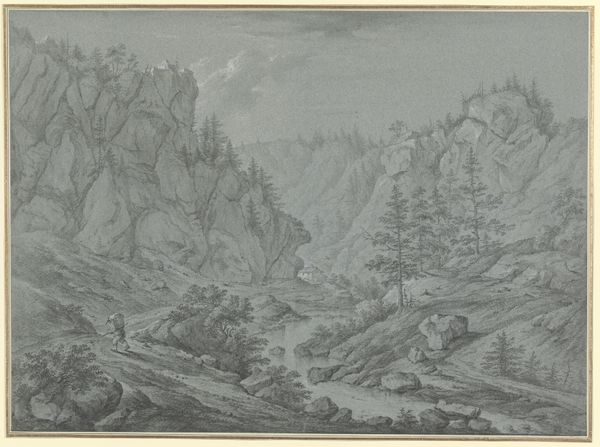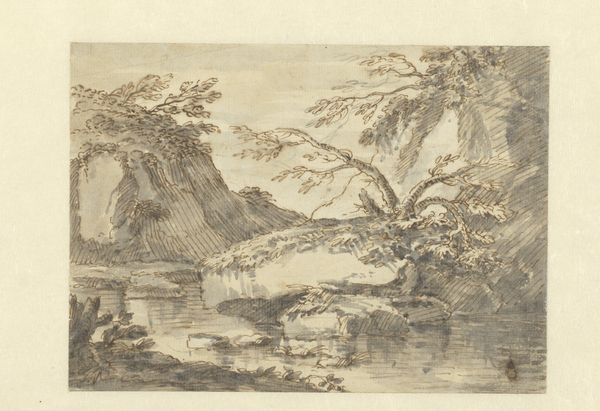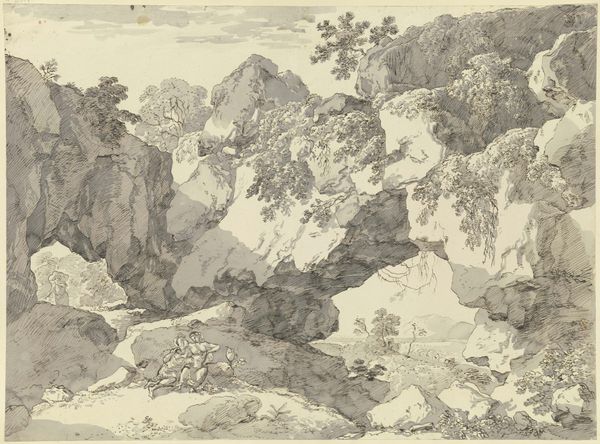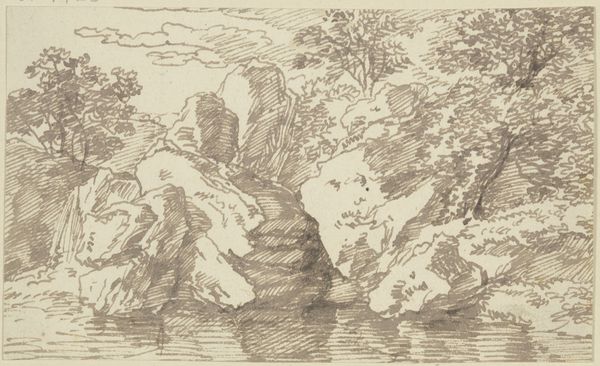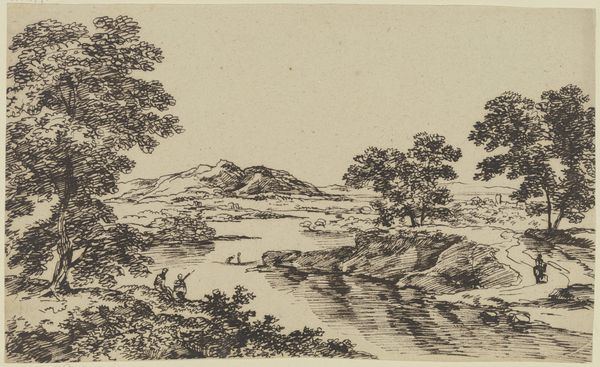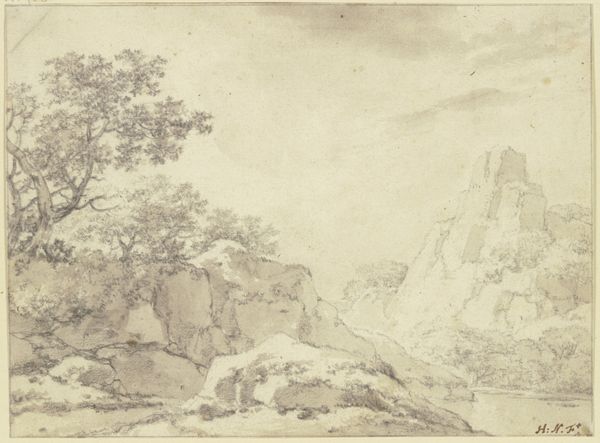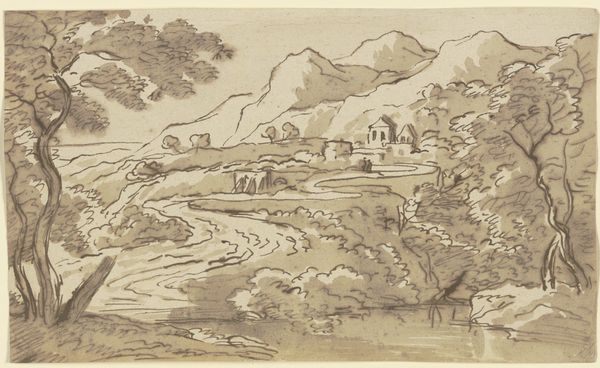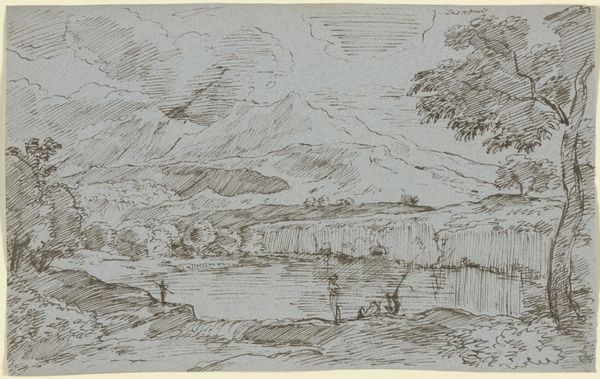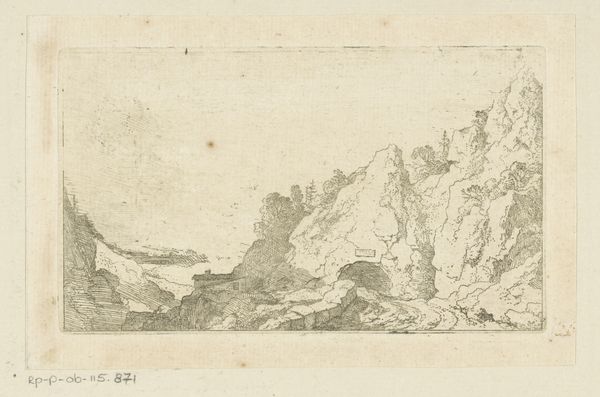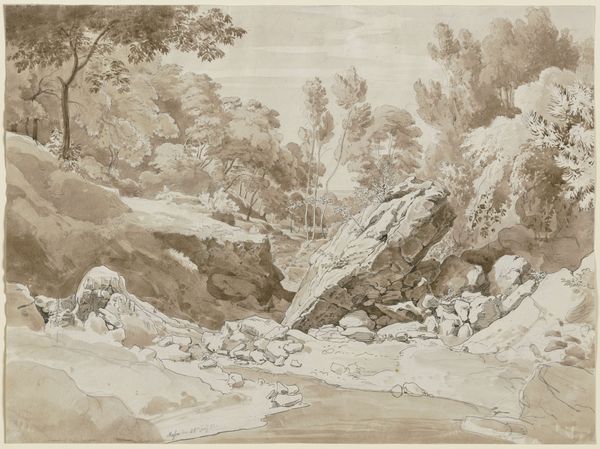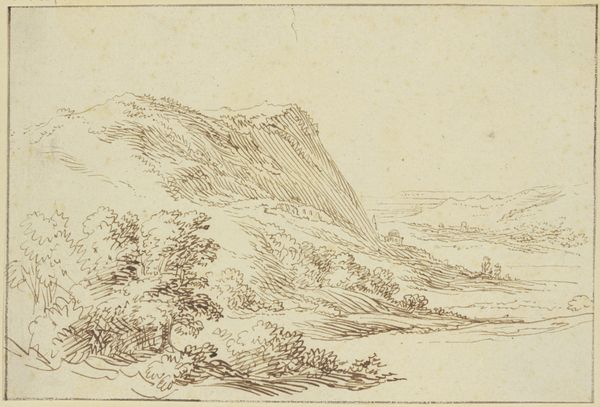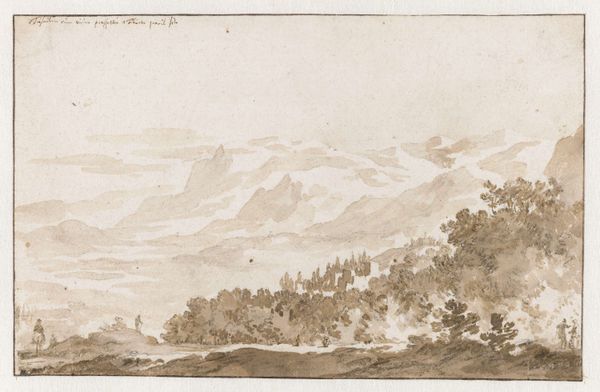
Copyright: Public Domain
Curator: Before us, we have Emil Lugo's "At the Belchen," a landscape crafted around 1850, rendered with ink, watercolor, and gouache on paper. Editor: It strikes me as a landscape of muted tones, almost monochromatic. The cascading water contrasts starkly with the somber hills. It feels simultaneously inviting and remote. Curator: Lugo was part of a burgeoning plein-air painting movement, seeking authenticity by capturing scenes directly from nature. He was devoted to rendering a subjective encounter within nature's expanse. This work gives access to Romanticism and its political use in the Vormärz era, revealing art’s purpose in both reflecting and shaping nascent national sentiment, as the landscape becomes intrinsically tied to cultural and territorial identity. Editor: Yes, but focus for a moment on the composition itself. Notice how the lines, while delicate, create a sense of depth, drawing your eye towards the distant peak of the Belchen mountain. The varying densities of the washes define the contours, constructing the volumes and space within the artwork, making masterful use of light and shadow, imbuing what could be a merely descriptive illustration with a contemplative quality. Curator: Indeed, considering the era, Lugo’s work speaks to the complex intersection of naturalism and nation-building. Artists like Lugo helped cultivate the collective imagination and contribute to shaping German identity by focusing on its landscape during this turbulent period. How can one view this aesthetic preference for untouched landscapes separately from the simultaneous dispossession experienced by rural populations? Editor: You are right, although my eye keeps wandering over the materiality of the piece. It seems that the very application of ink and wash imbues it with a sense of fleeting time, mirroring the ephemeral quality of light and atmosphere in the scene, no? Curator: Lugo's "At the Belchen" not only shows the aesthetic tastes of his time, but also reminds us of how the concept of nature itself is deeply embedded in broader socio-political landscapes. Editor: Quite. Examining both Lugo's artistry and the historical undercurrents undoubtedly enriches our appreciation of the work.
Comments
No comments
Be the first to comment and join the conversation on the ultimate creative platform.
